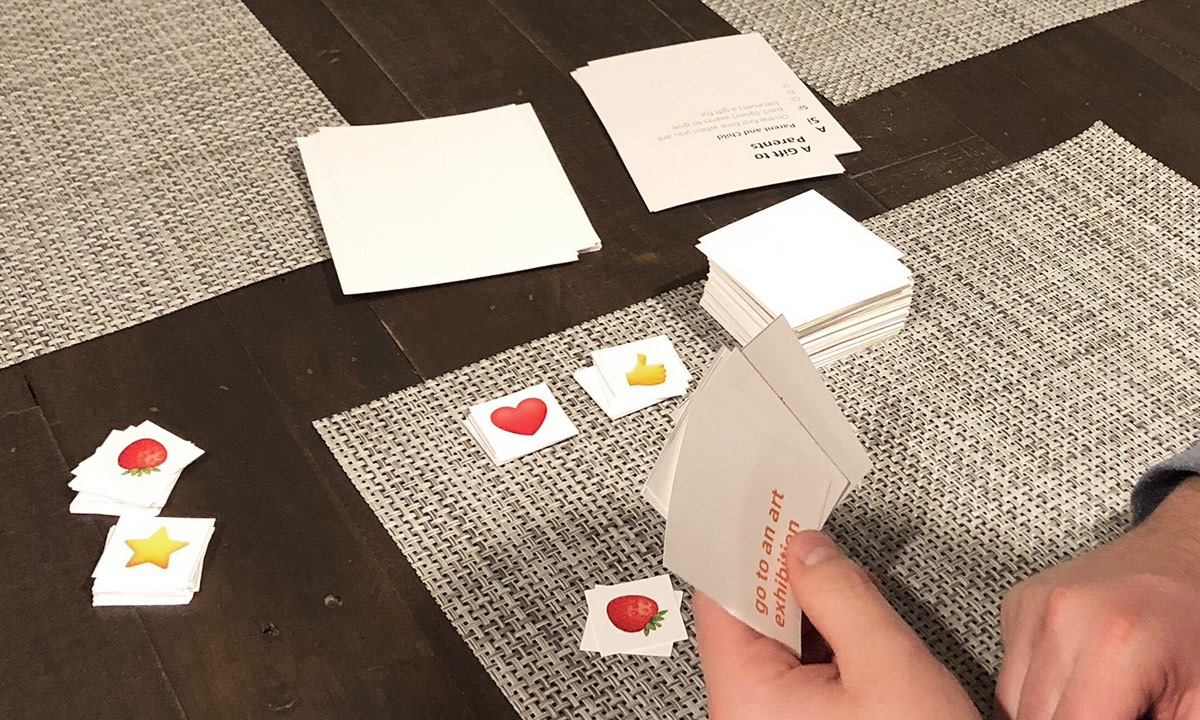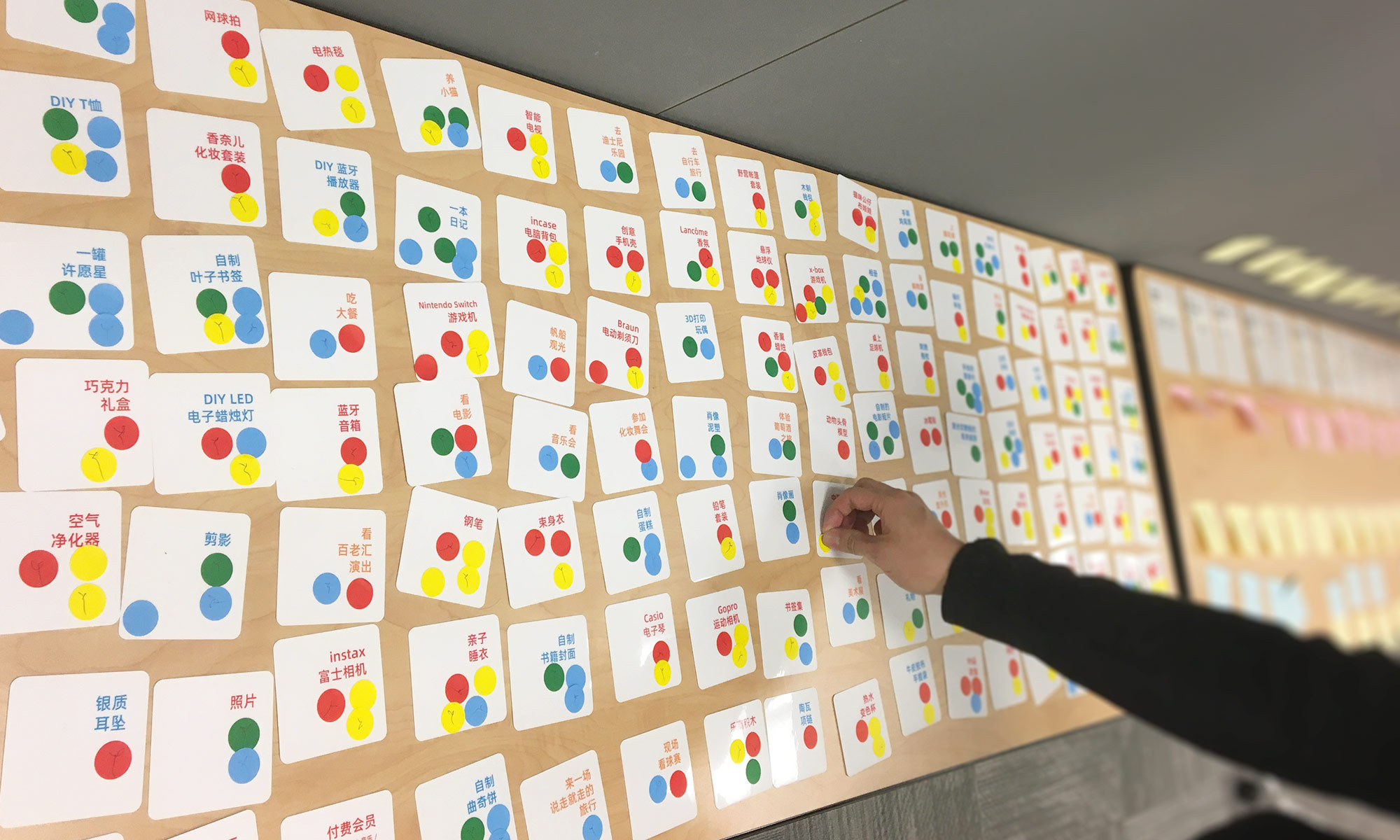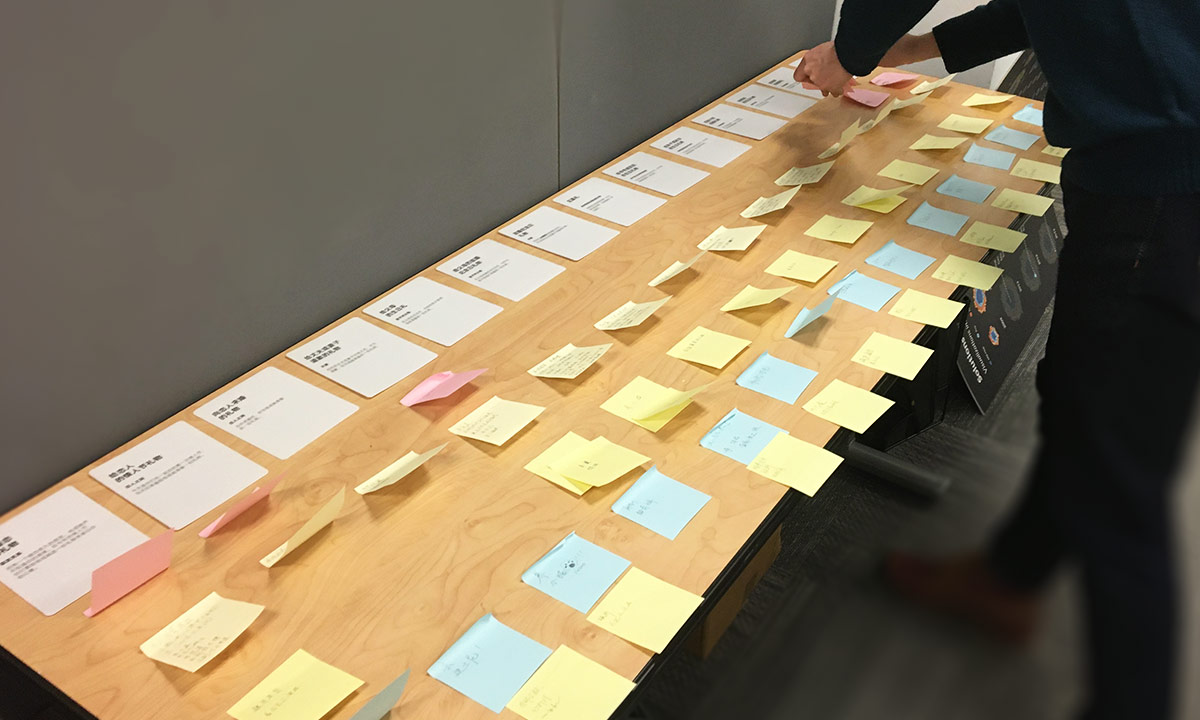Enriching Gifts
Participatory Design Research to Understand Human Relationships
Gifts are both emotional objects that are embedded with human's feelings, and reciprocal objects that invoke social interactions. In a civilized culture, gifts do not only represent the aesthetic value in their designed appearance, but also demonstrate an art of experience for people's emotional fulfillment and a routine practice in culture’s identity.
The purpose of the Enriching Gifts project is to analyze gift culture and understand its pluralistic individual values and symbolic social meanings. The designer uses participatory design to analyze the gift to understand its pluralistic individual values and meanings.
First, a gift-giving card game was designed to have players talk about their gift experience and reveal differences and issues in gift reciprocity. Secondly, a card sorting research was implemented to analyze how gifts, such as purchased gifts, self-made gifts, and experience gifts, are differently suited for various gift scenarios.
In conclusion, gifts are not only objects but an experience, enriched by human emotions. In order to enhance human relationships through gifts, there are patterns to identify potential objects as gifts and ways to enrich objects into gifts experience artificially.
Gift-Giving Card Game


Card Terminology
| Gift Cards | There are two types of gifts, a normal gift card, and a blank gift card. The blank gift card has no description, which means the giver can write down gifts they come up with when playing the game. |
| Scenarios Cards | The gift-giving situation is written on the card. It also articulates the relationship between gift-givers and receiver. In most cases, their roles are based on the gender of actual players. |
| Rewards Cards | One card represents one reward you would like to give. There are no special meanings for the types of emoji and icons. |
How to Play
- Players take turns to play the gift-receiver role. At the same time, other players are gift-givers.
- The first receiver picks one gift scenario and reads aloud the roles. The scenarios describe the gift-giving situations and relationship between the giver and the receiver, such as a birthday gift for parents given by their child.
- Gift-givers choose one gift card they think is the most appropriate based on the scenario and give it to the receiver.
- The receiver shuffles the gifts and displays them one by one. The gift-receiver articulates how they feel about the gifts and gives a satisfaction score ranging from 1 to 4.
- The receiver chooses the favorite one, and the giver of the gift will receive a reward corresponding to the satisfaction score.
- Players refill their hands to 5 cards. Then, another player plays as the gift-receiver.
- After N play rounds, the player who gets the most rewards win the game.
Gifts Sorting and Matching

Players sort the gift based on how they feel about them: fast or slow? Authentic or personal. Afterwards, they also choose gifts and match them to the gift-giving scenarios. After the sorting and matching process, data is clustered on different types of gifts, whether they are commodities, self-made objects, or celebratory events. By categorizing how people feel about those gifts, I use clustered bubble to visualize the sorting data. We can explore how people view this relationship through gifts. By categorizing what gifts people choose in different gift-giving scenarios, I place them in a sequence of an ongoing relationship. Therefore, we can also explore the pace of gift-giving in a changing relationship.
All in all, the card game creates a fun environment for players, allowing them to understand how people interpret the meaning of gifts differently. In the game, there are two factors that influence players decision-making on choosing the gift: first is the gift itself, second is the gift-giving scenarios. The visualization helps us to further understand how these two differently influence people’s decisions.


Gifts Data Gallery

